- Home
- Allison Brennan
Sudden Death f-1 Page 2
Sudden Death f-1 Read online
Page 2
But there was no doubt in her mind after viewing the body that the murder of this homeless man was connected somehow to the murders in Texas and Nevada. Why and how were the two big questions other than, of course, who.
She would wait to call it in until she had more information.
Megan frowned as she visually inspected the body again. Something else struck her as odd. Because the victim was homeless and had been living on the streets long enough to disappear into the backdrop of Sacramento, his age was indeterminate. At first glance, he could be as young as thirty, but the ravages of drugs and alcohol or simply the hard years living on the streets aged him. His clothes hadn’t been washed in weeks or longer, so his hands stood out.
They were clean.
She looked around for someone from the CSU or SPD, but all she saw were uniforms, and they eyed her apprehensively. Her boss, Bob Richardson, had made great inroads working with local law enforcement, but there were always a few who blamed the “Fibbies” for everything bad that happened on a call.
She took out her BlackBerry and snapped a couple photographs. Not SOP, but she didn’t plan to use the photos as evidence. She wanted to remember to ask the CSU about the hands, and this was Megan’s reminder.
Were clean hands part of the killer’s ritual? Or was this something new? Or special for this victim? Did this homeless man have some sort of hand-washing compulsion?
Or maybe there had been evidence on his hands and the killer had cleaned them. Very little could destroy evidence if the lab and technicians were good enough. But bleach or another caustic cleanser could be a sign that the victim had fought back and the killer had tried to conceal the evidence.
She knelt down and sniffed close to the hands.
From behind, a man cleared his throat. Megan looked over her shoulder. The tall Detective Black stood next to a short, light-skinned black man with a medical kit in hand.
She stood. “No bleach.”
Black raised an eyebrow.
“His hands are clean.” She was met with skepticism, so added, “He appears homeless. His face, his clothes, his hair-but his hands are clean.”
Black said with a tone of self-recrimination, “I didn’t notice.”
The deputy coroner mumbled an introduction- Roland Stieger-before squatting next to the corpse.
They watched in silence as Stieger inspected the body. He made notes on a preprinted form.
“Help me turn him,” he commanded.
As Black helped Stieger flip the body, Megan heard a slight rattle of metal, but when Black and Stieger started talking, it was clear they hadn’t heard it.
She stared at the body and saw a distinct chain pattern around the victim’s neck.
A veteran.
The prongs were so familiar she knew they were attached to dog tags even before she saw the tags themselves. She’d been raised in a military family, had buried her father with his dog tags, and she would never forget the sight of the chain or the sound the tags made as they slid up and down the metal chain.
Megan had always prided herself on her even temper and logical approach to problems, but suddenly her vision blurred and she wanted blood-the blood of the killer, the blood of a society that didn’t value those who fought for them. Men like her dad …
She pushed him from her mind and focused on the homeless veteran. “John,” she said, wanting an I.D. as quickly as possible. Wanting to know how this soldier had ended up homeless and dead.
Black looked at her quizzically. “Something wrong?”
“He’s a veteran. The dog tags.” She gestured. “We might be able to get a quick I.D.”
“That’d be nice,” Stieger said. “We have a few dozen unidentified homeless filling the deep freeze right now.”
While Stieger pulled the chain out, Black asked, “So how do you want to handle the investigation?”
“It’s your case, but I’d like to be involved. I’m fairly confident this is connected to the hot sheet cases.”
Black agreed. “We’ll need to have your boss and my boss talk, but I’m game. Joint task force?”
They both cracked a wry grin. There were so many “joint task forces” between local and federal law enforcement agencies that it was impossible to keep all of them straight. As a supervisory special agent, Megan herself sat on more than a dozen.
Stieger pulled out the chain. “Price, George L.,” he read. “This looks like U.S. Army. No medical restrictions, blood type A negative. Christian. Have the Social as well.”
Both Megan and Black wrote down the information. One of Simone Charles’s crime techs snapped pictures. Stieger put the chain down and Megan didn’t hear anything. “Wait,” she said.
“Excuse me?”
“There’s only one tag.”
Stieger held up the chain again and felt along the chain. “Right. One.”
Megan said, “There should be two tags. Either attached and separable, or the second tag on its own small loop.”
“There’s only one tag,” Stieger repeated. “Maybe he lost it.”
“Not likely,” Black said. Megan glanced at him, and he added, “My girlfriend is a veteran. She still sleeps with hers.”
He got it, and Megan didn’t have to explain.
“Maybe the killer took it for a souvenir,” she said.
Or maybe the victim did lose it. Or maybe he’d been injured or there was some other reason the second tag had been removed while he was a soldier. The missing tag felt odd to Megan, but she didn’t have any facts to back up her instincts, so she kept her mouth shut.
“How long has he been dead?” Black asked Stieger.
“Decomp is telling me about twenty-four hours, but with this heat, could be as few as five or six.”
It was eleven in the morning; Megan had been on scene for over an hour. The body had been discovered just after seven a.m.
“I’ll have to do some calculations,” Stieger added. “Factor in his clothing, the position of the body-fortunately, he’s not in direct sunlight. I’ll take a wild stab-and I mean a not to put in your report guess-at six to ten hours. I know, he looks and smells like twenty-four plus, but he’s not. He’s still in rigor, and heat speeds up that process instead of slowing it down.”
Simone Charles, the CSU supervisor, approached and said to Black, “I found something you need to see.”
Megan tagged along, though she felt as if Simone was antagonistic. Megan was used to it. It surprised her that in law enforcement, some of her biggest hurdles were fellow female cops and staff.
Black said, “So what did you find?”
“Follow me.”
Megan and John Black followed Simone down the alley to 12th Street between J and K Streets. Instead of crossing the crime scene tape, Simone turned into the stairwell of the parking garage.
She pointed toward the cement outer stairwell at the same time as Megan saw what had to be blood.
“Cast-off,” they said simultaneously. They were a half block from where the body was found.
Along the ground were bright yellow numbered cards and they told the story as Simone spoke. “We tested the wall, it came back positive for blood, but we’ll have to retest it in the lab. The victim was walking west toward Eleventh Street, and the killer sliced his hamstrings, from right to left, and the blood spattered on the wall. But he had complete control of the knife because there are no drops consistent with him holding the knife after the attack.”
“Which means?” Black asked.
“He sheathed it.” Simone demonstrated. “Slice-he can’t avoid the spatter because of the momentum and the suddenness of the attack-but he sliced, then stuck the knife right back in its case. Probably on his belt loop for ease of use.”
She pointed to the numbered cards. “Those are from the victim. He fell here”-she pointed to an area just inside the stairwell that had a smeared, small dried pool of blood with two clean sections in between, most likely where the victim had fallen to his knees-”then he was p
icked up and carried up the stairs.”
She moved up the stairwell and Megan followed.
Simone exited on the third floor. There were several crime scene technicians working the area.
“Wait,” Megan said. “Did you say he was carried?”
Simone grinned like the cat who ate the canary, knowing she’d scored. Megan had to give her credit, Simone held that card nicely. “Oh, yeah. Carried.”
Megan looked at the ground, the stairs, and the numbered markers, then saw what Simone saw. “No drag marks.”
“Exactly.” The criminalist beamed. “The guy couldn’t have walked anywhere, so the killer would have to drag or carry him. The vic was pretty big, but I suppose a larger, strong male could have hoisted him over his shoulder.” She frowned, looking down the stairwell.
“But then,” Megan said, “the killer would have had his arms around the victim’s legs.” She demonstrated by pretending to haul something large onto her shoulder. “There wouldn’t be this kind of blood trail. Maybe a few spots, but nothing this extensive.” If the victim had been dragged up the stairs, the blood would have been smeared-not in this drop pattern.
“Exactly,” Simone said in an admiring tone, as if she’d just realized that not all FBI agents were morons.
“There were two people?” Black asked.
Megan nodded. “Carrying him by the armpits, lifting him up.” She followed the blood spatters. “You can see some small, narrow drag marks in places-nothing deep, probably from his shoes.” She frowned. “He was barefoot. Where are his shoes?”
“He was homeless,” Simone said. “Right?”
“He’d have shoes,” Megan said. She’d seen many homeless dead, too many. Their shoes might have been too small or too big, but they wore shoes. “His feet weren’t that dirty-he couldn’t have been barefoot on the streets for long.”
“Weren’t the other victims barefoot?” Black asked.
“Yes,” Megan replied.
Nowhere in the reports from the previous crime scenes had the investigators indicated any suspicions of the two perps. Megan’s heart beat rapidly with the new and potentially valuable information. She couldn’t imagine the police holding back from federal law enforcement such important information as a killing pair.
The three of them followed the yellow markers across the parking garage. “I’ve already called for all security tapes, but there’re many blind spots. The main entrance, exit, and all pedestrian entrances are covered, but not every inch of each parking floor. Still, we should be able to view any vehicle entering or exiting. The garage opens at five a.m. six days a week, but it’s closed on Sundays-only those with card keys can get in.”
“So the killer had a card key?”
Simone shrugged. “I don’t know. He could have tricked the system, or walked in and stolen a pass from someone else’s vehicle to get his own in. We’ll figure that out when we get the tapes from security. Or he could have come in before the garage closed at eight p.m. Saturday night.”
“Do you need a card key to get out?” Megan asked.
John and Simone said in unison, “No.”
“And they have tapes on all exit points?”
“Yes.”
Megan was cautiously optimistic. If they had tapes of the vehicle, they may have a view of the driver. Or passenger, if there were in fact two killers as the blood evidence indicated. Make and model would be obvious, and very likely a plate number or partial plate.
In the center aisle of the garage, Simone stopped. Three parking spaces had been cleared and yellow crime scene tape was posted. “People aren’t going to like me. I closed the garage as soon as we found the trail, but there were already some people parked inside. They’re not going anywhere until I finish collecting evidence.” She pointed to what first appeared like nothing.
Then Megan saw the blood. She glanced behind her and saw the trail of numbered yellow cards, and they stopped here at the rear of the parking slot.
“My guess is a van,” Simone said. “If they had a card key they could have gone anywhere.”
“Then why dump the body in this alley?” Black asked.
Megan asked, “Wouldn’t security have towed it?”
Black shook his head. “A lot of people leave their cars overnight. Drinking at a bar, going home with a girlfriend, working late.”
“We have the list-security does note the tag numbers, but not the location. There were only three vehicles in the garage at midnight last night when the parking supervisor made his final rounds.”
“Three?” Megan’s heart raced. “One of them had to have belonged to the killer.”
“Already ahead of you,” Simone grinned. “I called in the plates and my office is running them.”
It seemed too easy.
“What’s wrong?” Simone asked. “I’ve practically closed your case for you.”
“These killers have three victims under their belt and in the first two murders, no evidence pointing to a suspect. No witnesses. I don’t see them being so dumb as to park in a public garage and let their license plate be recorded.”
“Most criminals are stupid,” Simone said. “Our prisons are bursting with them.”
That may be the case, but Megan wasn’t going to pop the champagne until an arrest was made.
“How did the killers return unnoticed?” Black asked.
“You can walk in from the street, just like we did,” Simone said. “There’s that half wall on the ground floor, plus walkways for pedestrians. They brought him in, up the stairs, did whatever to him, and left him dead in the alley a half block away.”
Black frowned.
“What?” Megan asked.
“The exit is on J Street.”
“And so?” Simone said.
Megan nodded. “The killers would have had to go around the building to dump the body.”
“And J Street is one way. They’d have to exit J Street, turn on Twelfth, down L Street, up Tenth, then turn on Eleventh to get back to this exact spot. A wide circle.”
Megan disagreed. “You’re assuming they’d obey traffic laws.”
Simone agreed. “At five in the morning, they could drive the half block down J the wrong way and no one would notice. Pull into the alley and pop the guy. I’m surprised at you, John. Making such a blanket assumption.”
Black rolled his eyes. “I guess I assumed people obey traffic laws.”
“Why didn’t they just execute him in the garage?” Megan asked. “Why dump him in the alley? Even if they didn’t follow the flow of traffic, they had to drive around to get back to the alley.”
“Downtown is dead most nights, especially on Sundays,” Simone said. “I could run around here naked and no one would notice.”
Black raised an eyebrow, but didn’t say anything.
“I’d like a copy of the tapes,” Megan said. “And your forensics report. With security cameras on the pedestrian entrance we should get a face, possibly a good shot, and I.D.”
“That’s what I’m thinking. No problem.”
Megan asked, “Is there any evidence that they took him out the same way? Not used the van, but brought him down the stairs?”
“Nooo,” Simone said cautiously. “But after a little time, the injury would have clotted and there might not be blood evidence. We’re still combing the crime scene-”
So that was a possibility. That was all Megan needed to know to confirm that these killers had a plan. Whether they drove out and dumped the body or carried him down the stairs and executed him next to the Dumpster, they had carefully determined that their way was the best way. Organized. It was risky to use such a public place for the murder, but clearly the location was important to them for some unknown reason.
As Megan walked back to the alley with Detective Black, she couldn’t grasp the motive. Why go through such elaborate measures to kill a homeless veteran? Why kill him nearly a block from where he was kidnapped in a risky, public location?
It seeme
d both foolish and deliberate.
What did George Price have in common with Austin’s small-business owner Duane Johnson and Las Vegas’s Dennis Perry?
Why were they tortured?
Why were they executed?
And if the M.O. held, Megan would probably not learn anything else about the killers until they were caught, Simone’s glee in having the three license plates to run notwithstanding. They’d moved around the country with ease, and if they’d killed Price at dawn, they could be three hundred miles away by now.
Fortunately, they had a lot more information than at the previous two crime scenes. Security tapes; a larger, public crime scene; greater chance of witnesses. With a little time and a lot of hard work, Megan was confident they’d I.D. the killers. She was good at working each piece of the puzzle until an identity was confirmed, a suspect arrested, and a killer prosecuted.
Megan didn’t know that in twenty-four hours, they’d have nothing. No tapes. No evidence. No body. And no jurisdiction.
CHAPTER TWO
Jack Kincaid leaned against the wall of El Gato during happy hour, a bottle of Tecate in his hand-his first and only drink of the evening. Scout, Lucky, and his other team members were celebrating their most recent success. They had rescued four medical missionaries in Guatemala who’d been kidnapped by rebels wanting their supplies. The rebels had thought ransoming the missionaries would yield more cash. After safely escorting the hostages to the U.S. embassy, Jack and his team returned to the jungle, retrieved the stolen supplies without incident, and in seventy-two hours were back at their base of operations in the border town of Hidalgo, Texas.
While Jack should have been more involved in the celebration, he was preoccupied. When he’d returned to the States earlier in the day, there was a message from Dillon that their younger brother, Patrick, had awakened from his coma. Jack weighed whether to visit Patrick. He wanted to see him, but he didn’t want to see the rest of the Kincaids.
That wasn’t fair. He didn’t have a problem with his brothers and sisters. And certainly not his mother.
But his father had made it very clear two decades ago, reiterated more recently, that Jack was not welcome. And frankly, Jack didn’t want to see Colonel Pat Kincaid either. Long ago, Jack had put the fuck-up in Panama behind him, but his father couldn’t do it. Couldn’t see that sometimes the rigid military rules were bullshit. That sometimes it was more important to stand for something than to take wrong-headed orders.

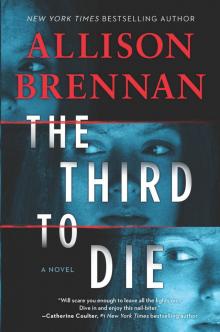 The Third to Die
The Third to Die Nothing to Hide
Nothing to Hide No Way Out
No Way Out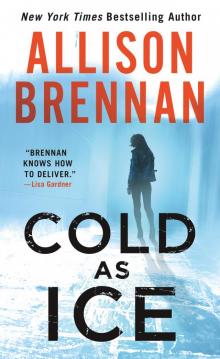 Cold as Ice
Cold as Ice Cut and Run
Cut and Run No Way Out (Lucy Kincaid Novels)
No Way Out (Lucy Kincaid Novels) Storm Warning
Storm Warning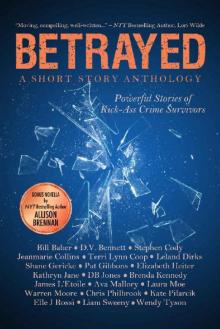 Betrayed: Powerful Stories of Kick-Ass Crime Survivors
Betrayed: Powerful Stories of Kick-Ass Crime Survivors Killing Fear pb-1
Killing Fear pb-1 Make Them Pay
Make Them Pay The Lost Girls
The Lost Girls Stalked
Stalked Killing Justice
Killing Justice A Deeper Fear
A Deeper Fear Poisonous
Poisonous Fear No Evil
Fear No Evil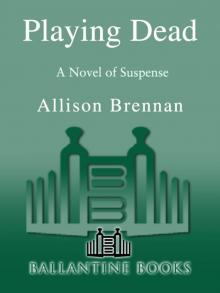 Playing Dead
Playing Dead Cold Snap
Cold Snap Vacation Interrupted
Vacation Interrupted Frosted (Moreno & Hart Mysteries)
Frosted (Moreno & Hart Mysteries) 2 - The Hunt
2 - The Hunt Stolen
Stolen No Good Deed
No Good Deed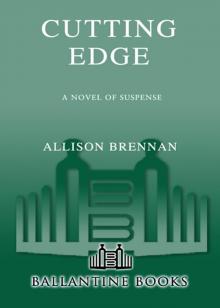 Cutting Edge
Cutting Edge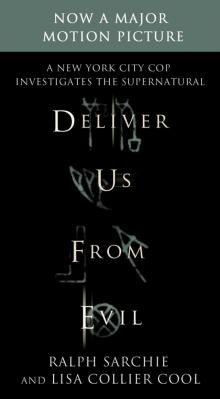 Deliver Us from Evil
Deliver Us from Evil If I Should Die
If I Should Die Speak No Evil
Speak No Evil Silenced lk-4
Silenced lk-4 Original Sin sds-1
Original Sin sds-1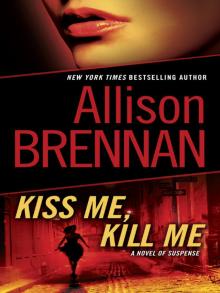 Kiss Me, Kill Me lk-2
Kiss Me, Kill Me lk-2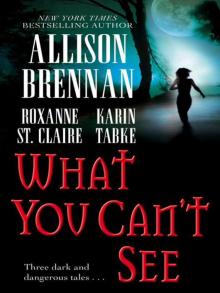 What You Can’t See
What You Can’t See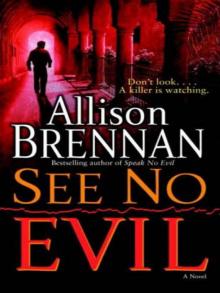 See No Evil
See No Evil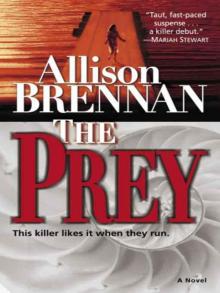 The Prey
The Prey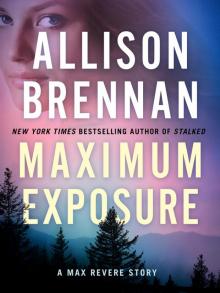 Maximum Exposure
Maximum Exposure Fatal Secrets f-2
Fatal Secrets f-2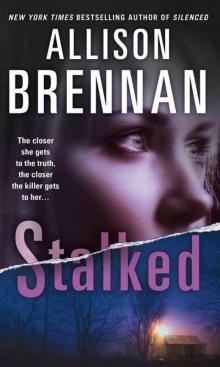 Stalked lk-5
Stalked lk-5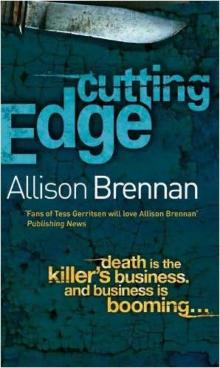 Cutting Edge f-3
Cutting Edge f-3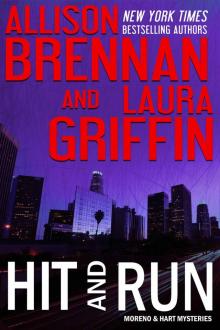 Hit and Run (Moreno & Hart Mysteries)
Hit and Run (Moreno & Hart Mysteries) Sudden Death f-1
Sudden Death f-1 If I Should Die lk-3
If I Should Die lk-3 Notorious
Notorious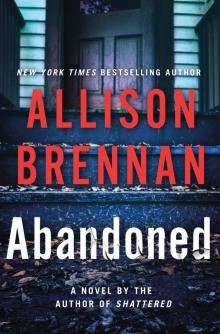 Abandoned
Abandoned Fatal Secrets
Fatal Secrets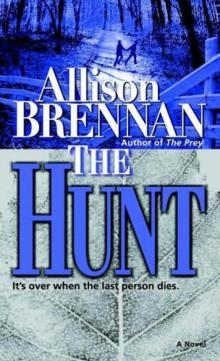 The Hunt
The Hunt Carnal Sin sds-2
Carnal Sin sds-2 Love Is Murder
Love Is Murder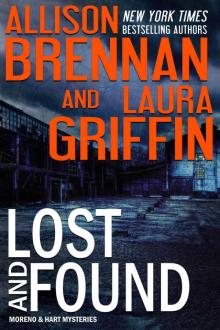 Lost and Found
Lost and Found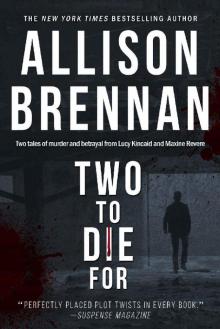 TWO TO DIE FOR
TWO TO DIE FOR Breaking Point
Breaking Point Best Laid Plans
Best Laid Plans Carnal Sin
Carnal Sin Silenced
Silenced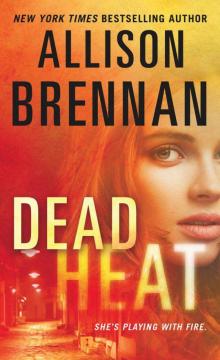 Dead Heat
Dead Heat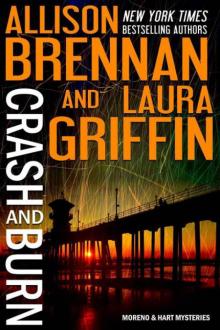 Crash and Burn
Crash and Burn Sudden Death
Sudden Death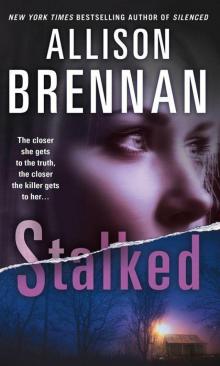 Lucy - 05 - Stalked
Lucy - 05 - Stalked Mortal Sin
Mortal Sin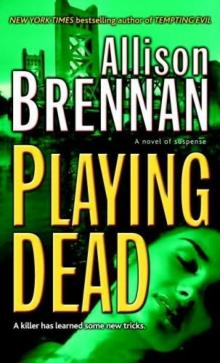 Playing Dead pb-3
Playing Dead pb-3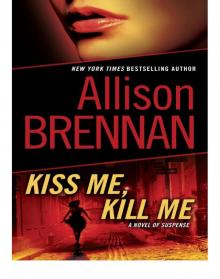 Kiss Me, Kill Me
Kiss Me, Kill Me Original Sin: The Seven Deadly Sins
Original Sin: The Seven Deadly Sins See No Evil e-2
See No Evil e-2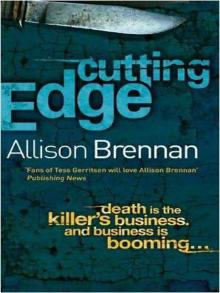 Cutting Edge: A Novel of Suspense
Cutting Edge: A Novel of Suspense Original Sin
Original Sin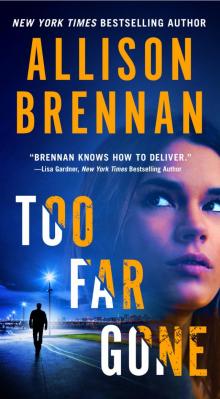 Too Far Gone
Too Far Gone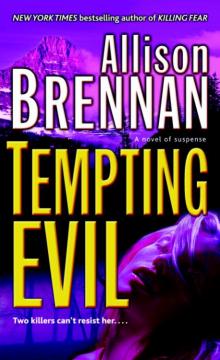 Tempting Evil
Tempting Evil Shattered
Shattered Killing Fear
Killing Fear Murder in the River City
Murder in the River City Love Is Murder (lucy kincaid)
Love Is Murder (lucy kincaid) Stolen (Lucy Kincaid Novels)
Stolen (Lucy Kincaid Novels)